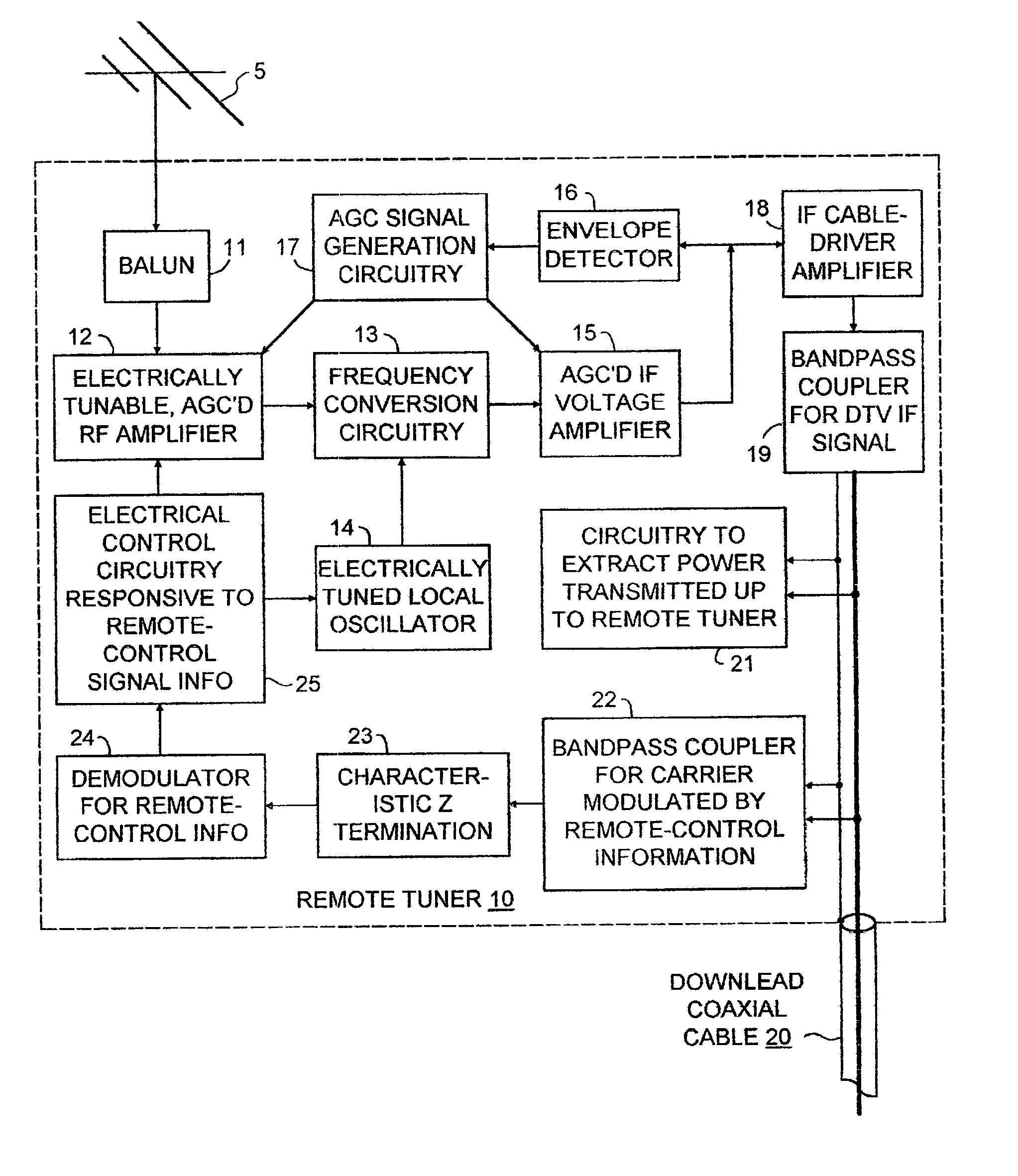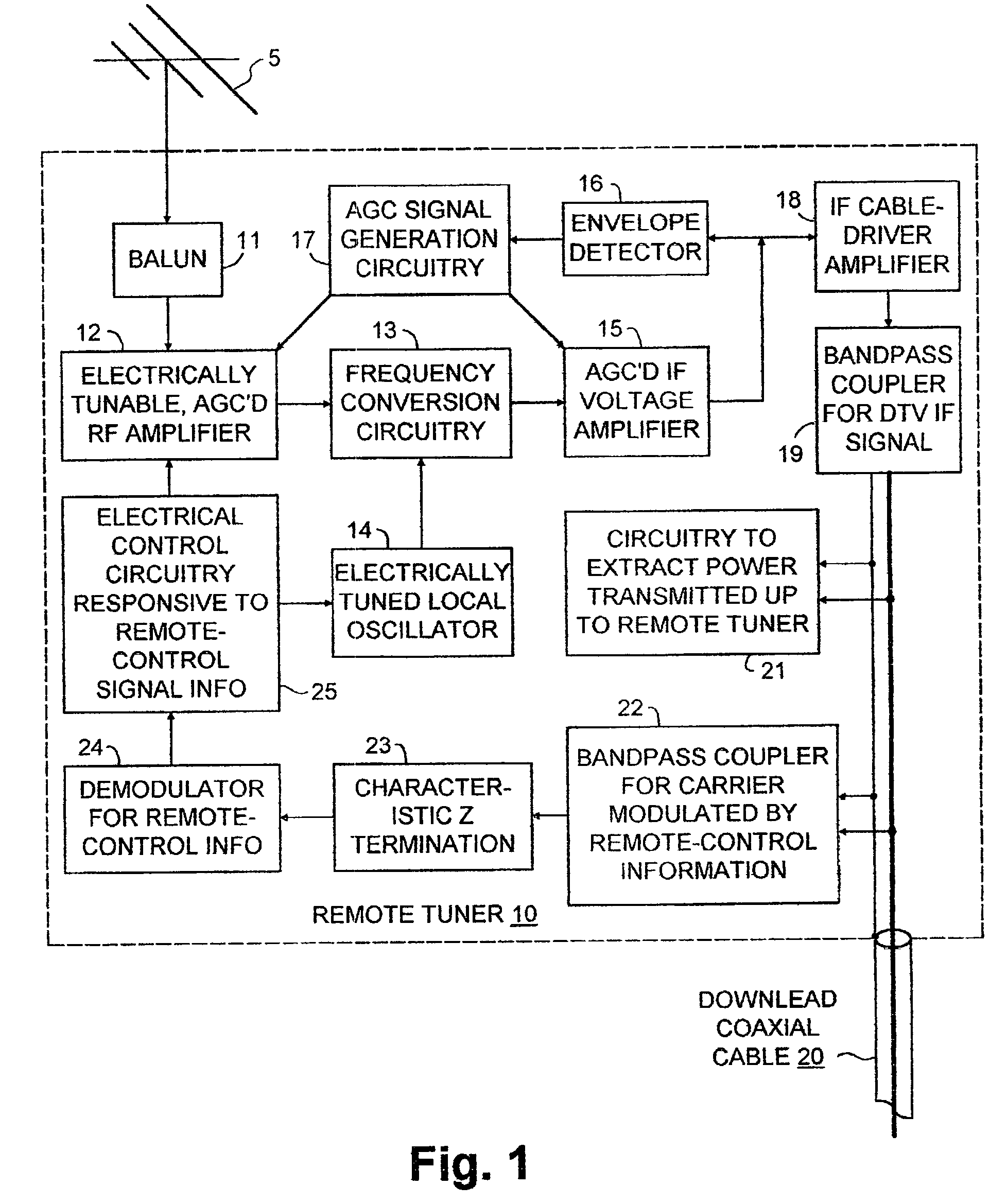Digital television receiver with remote tuner for driving transmission line with intermediate-frequency signal
a technology of transmission line and tuner, which is applied in the direction of transmission, selective content distribution, television systems, etc., can solve the problems of simultaneous complete loss of picture and sound, loss, and rare loss of viewable pictur
- Summary
- Abstract
- Description
- Claims
- Application Information
AI Technical Summary
Benefits of technology
Problems solved by technology
Method used
Image
Examples
Embodiment Construction
[0021]FIG. 1 shows an outdoor antenna 5 connected to a nearby tuner 10 constructed in accordance with the invention for being located remotely from the rest of the digital television receiver, which is located indoors. The antenna 5 connects via a balun 11 to a radio-frequency amplifier stage 12 in the remote tuner 10 and supplies that RF amplifier stage 12 with radio-frequency signal. The amplified radio-frequency signal from the RF amplifier stage 12 is converted to an intermediate-frequency signal by frequency-conversion circuitry 13 in the tuner 10, which frequency-conversion circuitry 13 includes an electrically tunable local oscillator 14 for selecting the DTV channel to be converted to the intermediate-frequency signal. In actual practice, the electrically tunable local oscillator 14 is likely in fact to comprise one of the types of circuitry commonly referred to as a “frequency synthesizer”, which types of circuitry are already employed in TV receivers.
[0022]The tuner 10 may...
PUM
 Login to View More
Login to View More Abstract
Description
Claims
Application Information
 Login to View More
Login to View More - R&D
- Intellectual Property
- Life Sciences
- Materials
- Tech Scout
- Unparalleled Data Quality
- Higher Quality Content
- 60% Fewer Hallucinations
Browse by: Latest US Patents, China's latest patents, Technical Efficacy Thesaurus, Application Domain, Technology Topic, Popular Technical Reports.
© 2025 PatSnap. All rights reserved.Legal|Privacy policy|Modern Slavery Act Transparency Statement|Sitemap|About US| Contact US: help@patsnap.com



